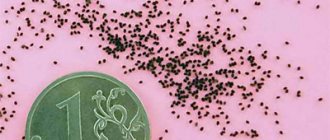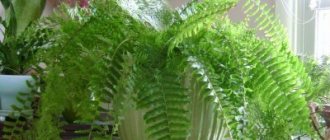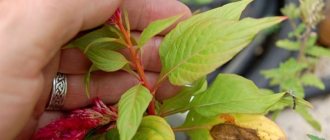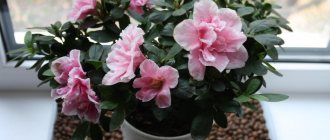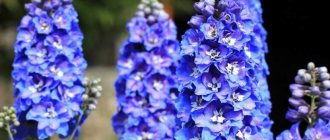Saxifraga is a herbaceous plant that can be either annual or perennial. It is often used in landscape design. Saxifraga forms a continuous carpet. The flowering period occurs at the end of spring and throughout the summer.
There are approximately four hundred varieties of saxifrage. This plant is quite unpretentious. Saxifraga is common in Eurasia, Central America and the mountainous parts of the African tropics.
The size of the plant can be different: from 5 cm to 0.7 m. It can form a carpet of varying thickness. Saxifraga is a rhizomatous plant species. The basal rosette is formed by leaves, which may have a gray tone, as they differ in the property of accumulating lime.
The flowers have five petals and can be of different colors: white, soft pink, lilac, sunny yellow. There are varieties of saxifrage with bright scarlet flowers.
This plant is used both for decorating the local area and for keeping in the house.
Main characteristics
Saxifraga is a herbaceous plant from the group of Perennials, the Umbrella family. An unpretentious crop with no special care requirements. It grows mainly on rocky soils and slopes, prefers a temperate climate.
The maximum height of the inflorescence is 80 cm, the average height of the flower stem is 20-25 cm. A characteristic feature is a basal rosette of medium-sized fleshy leaves.
Saxifraga flowers are varied in shape, size and color; leaves without petioles are found on the stem.
Plant properties
The saxifrage flower is often used in folk medicine due to its unique healing properties. This plant has: anti-inflammatory, soothing, anti-infective, bactericidal, anti-fever properties.
This plant can be used to cure many diseases. But this plant, in addition to its benefits, can be harmful to human health. It may cause allergic reactions.
Main types of saxifrage
Thanks to the efforts of breeders, the list of existing saxifrage species is constantly updated, striking with its splendor and rich selection.
This crop is very popular among landscape designers, because its appearance is extremely diverse: from indoor spherical bushes to an incredibly beautiful model - Snow saxifrage.
Today the most popular types are:
- Shadow Saxifraga.
- Snow culture.
- Saxifraga with decorative panicles.
- Indoor representatives (cotyledon).
- Swamp saxifrage.
- Sod culture.
- Granular saxifrage.
- Mossy saxifrage.
Each of the presented species differs in its care characteristics, preferences in growing climatic conditions, and the structure of the supporting stem and leaves.
Diseases and pests
Saxifraga is quite resistant to pests and diseases. However, unfavorable growing conditions or improper care can cause it to become infected or damaged by pests.
Dryness can cause damage to the plant by spider mites. In this case, a whitish web will be visible on the saxifrage. Later, the mite infects the leaves, they become covered with yellow spots, dry out and gradually die. Excessive moisture leads to the appearance of powdery mildew or damage to the leaves of the plant by rust, which is created by a variety of fungi.
Spider mite
The most dangerous pests for these perennial plants are scale insects and green aphids.
Shadow Saxifraga
It is an evergreen crop that prefers a temperate climate. Benefits for garden owners:
- Completely unpretentious in care.
- Easily tolerates temperature changes and lack of moisture.
True to its name, it prefers shady areas in the flower garden. As the plant grows, it acquires a beautiful emerald shade of foliage, and the bush itself gradually takes on the shape of a ball with a maximum height of 15-17 cm.
Snow culture
Snow saxifrage is one of the most popular representatives of its culture. Due to selection characteristics, it tolerates low air temperatures well.
Excellent alpine slides in the northern regions are decorated with this representative of Saxifraga. The shrub is compact in size and forms a kind of rosette with an abundance of white or creamy-yellow flowers.
Temperature requirements
When saxifrage is actively growing and developing, it requires an air temperature of at least 20 degrees Celsius. In winter, 15 degrees will be enough for seedlings.
If indoor saxifrage is in a warm room, it needs to be additionally illuminated in winter. Otherwise, its stems will be thin and turn yellow.
Saxifraga with decorative panicles
This representative of the culture is not inferior in its characteristics to the previously presented species of Saxifraga. It is easy to care for and can withstand harsh climates and temperature changes.
The main positive quality is good tolerance of any soil acidity and soil composition. Decorative indicators also delight with their variety of colors and shapes:
- During the flowering period, a large number of miniature flowers of a red or purple hue appear on the base.
- Pale yellow inflorescences appear either later or simultaneously with the red flowers. They bring variegated colors and subtle contrast to the lush inflorescence.
The main feature of such a culture is the presence of original panicles, on which bright inflorescences are located.
Prevention
Diseases can be treated in various ways, but it is much easier to prevent their development
To do this, it is important to remember that even the most moisture-loving plant can die from too much water. To treat the most common diseases, such as fungi and rot, you need to carefully examine the plant affected by the disease and carefully separate the damaged parts
There are also some products that help very well in destroying fungus (HOM, topaz, etc.).
Treatment of saxifrage
Arends' saxifrage is a flower for all occasions: both practical to use at home and beautiful for design. If all conditions are followed correctly, the plant will delight residents and guests with its variegated, lush color.
Indoor representatives of Saxifraga
Of all the representatives existing today, Cotyledon is recognized as the most spectacular and original model. In appearance, the plant resembles a succulent due to its fleshy leaves and dense rosette at the base.
During the flowering period, interesting flowers of pale pink color (in the shape of an original star) appear on the rosette.
Possible difficulties during cultivation
The only difficulty that gardeners have when growing saxifrage is the loss of decorative value due to overgrowth. Since the regrown shoots lose their leaves, which are located closer to the ground and the soil is visible through them. Therefore, when caring for the crop, it is necessary to pay attention to renewing the bushes and dividing them using cuttings. Also, so that the plant does not lose its decorative effect, faded flowers need to be broken off along with the peduncle at the base of the turf.
Soddy Saxifraga
This representative amazes the imagination with its aesthetic qualities. On the surface of the soil, the plant forms a lush rosette of rich green leaves.
During the flowering period, interesting inflorescences with a variety of colors appear above the rosette (from milky white to rich red).
Very often, additional specks and stripes are visible along the inner edge of the flower, thanks to which the inflorescence acquires a bright visual effect.
Due to its good tolerance to temperature changes and ease of care, such a crop is used for planting in the spaces between the stones of alpine hills, decorative rocky slopes and ledges.
Application
Saxifragas of different types can be used in a wide variety of combinations, in sunny and semi-shaded positions. Particular care should be taken for alpine species; they are more demanding and will not cope with an ordinary flower bed. In their case, an imitation of the natural habitat, a secluded position, should be created. In the case of, for example, Arends saxifrage, this does not cause any problems.
Saxifraga is used mainly for:
- planting in rock gardens;
- near the walls;
- in the spaces between paving slabs;
- on slopes and other uneven ground;
- Some species grow well in containers on the balcony.
High mountain inaccessible rocks and ravines are a natural environment for saxifrage. The beauty of these plants can also be admired in the garden if you create appropriate conditions similar to natural ones. These are a variety of plants, representatives of which are grown in open ground and at home. In a variety of species and varieties you can find plants that prefer moisture, which will grow well near a pond. The largest rarities of the genus include alpine species, more demanding, but quite rare in gardens.
Grain culture
An original decorative perennial, very popular among landscape designers. Among all the positive qualities inherent in almost all representatives of the Saxifraga family, it has an interesting herbaceous rosette.
The stems are low, abundantly covered with soft hairs, giving the rosettes a lush appearance. The inflorescences are a rich white color, collected in small tassels.
Description
As a rule, saxifrage is a perennial, although there are varieties grown as annuals or biennials. The latter types are not used for landscape design.
Saxifraga, a description of this confirmation, is a ground cover, creeping garden plant:
- The leaves have different shapes (depending on the variety), but all of them are collected in a rosette.
- Strong flower stalks emerge from the rosette and inflorescences form on them. They can be carpal or paniculate.
- Flowers, white, pink or red, small in size from 1.5 to 2 cm.
- The plant's survival rate is high: it can grow under unfavorable conditions, on almost any soil.
The growing season is long. It blooms continuously from the end of May (in the southern regions of Russia) for a whole month. In the middle zone, flowering begins later.
Video
Mossy culture
The herbaceous rosette, due to the presence of a huge number of soft hairs, takes on the appearance of mossy vegetation. When planted on rocky slopes and surfaces, it grows in a low continuous carpet.
The inflorescences are yellow or lemon with red specks along the inner contour.
Features of caring for saxifrage
Practical care for garden crops includes the following actions:
- Soil preparation.
- Planting seeds.
- Watering, loosening the soil.
- Preparing for winter.
Each of these stages is required, but may vary depending on the selected type of saxifrage, planting and caring for which will require a certain amount of knowledge and effort from the gardener.
Reproduction methods
Reproduction of saxifrage is a fairly simple procedure that even an inexperienced but responsible amateur gardener can cope with. One of the important conditions on which the results of the work depend is the quality of the planting material used for propagating plants.
Saxifraga reproduces using:
- seeds;
- layering;
- dividing the bush.
Propagation by seeds
Before sowing, small plant seeds must undergo stratification. After this procedure, sowing is carried out in shallow planting containers filled with universal soil mixture or a mixture of peat, turf, humus and sand. Before sowing, the soil should be wetted.
The seeds are sown superficially, without burying them in the substrate. At the end of the work, the seeds are lightly sprinkled with fine sand. If planting material is excessively covered with soil, its germination potential will be sharply reduced. After sowing, the container is covered with film and placed on a warm and well-lit window. Typically, seedlings appear after a week, but in some cases, seed germination may take 10-14 days. After the first shoots appear, the film is removed. While the young seedlings are growing, the air temperature in the room should be maintained at 20-22°.
Reproduction by layering
This method is used after the donor plant finishes flowering (usually this happens in mid-summer). Then, having selected the strongest side stems, they are bent to the ground and pinned with a wooden or plastic bracket. The earth is poured over the staple and it is shed generously. While the cuttings are taking root, the soil at the location of the staple is constantly moistened.
Before wintering, rooting cuttings are covered with a layer of spruce branches or covered with sawdust. If all manipulations are performed correctly, then in the spring the gardener will receive a new young plant, which can be easily separated from the donor bush and transplanted to another place.
Bush division
To implement this method, it is necessary to select a healthy and strong donor plant. Before the procedure, you should also prepare the planting holes in advance. It is best to arrange them in a slightly shaded place. Having dug a hole, you need to lay drainage fragments (expanded clay, pebbles, gravel) on its bottom, and pour a mixture of lime, compost, earth and sand on top. This will ensure optimal acidity and sufficient moisture and breathability of the soil.
1-2 hours before the procedure, the donor bush is watered generously to simplify its removal from the ground.
Then the plant is carefully dug up, trying not to damage the roots. After this, using a sharp shovel, with confident and precise movements, the bush is divided into several parts
The resulting parts are transferred to the holes, covered with earth, compacted on all sides and watered abundantly. Before wintering, the planted parts of the plants are covered with spruce branches.
Soil preparation
Almost all representatives of the Saxifraga family are unpretentious plants. There are no special rules for soil preparation in this case, there are only general recommendations:
- The soil should be abundantly moistened and loosened.
- It is worth removing large fragments and metal parts (nails, debris) from the soil.
- If desired, you can create an additional drainage layer of expanded clay, but this is not necessary.
Saxifraga is perfectly adapted to grow on rocky surfaces, and landscape designers often take advantage of this property.
When planting a plant on alpine hills, you should only lightly add fertile soil to the cracks between adjacent boulders.
Specifics of growing flowers
In order for saxifrage to attract attention with its high decorative effect, you need to plant it correctly. This procedure will not cause difficulties even for novice gardeners. The secret to successfully growing saxifrage is to create conditions as close as possible to its natural habitat.
Time and place
Saxifraga is not a capricious crop, but when determining the planting site, it is important to take into account its natural preferences. When arranging a flower garden, you need to know that the flower loves shady places where it is protected from the scorching sun. Ideally, trees and shrubs will grow nearby.
An important factor when cultivating saxifrage is high-quality drainage. Stagnant water can be detrimental to flowers, so you need to think in advance where the perennial will grow. A good solution would be to plant the flower in crevices between stones or on a slope, with additional watering during the dry season.
It is recommended to plant saxifrage seedlings in June, when the air and soil have a temperature of 18-20 degrees.
Soil preparation
Saxifraga takes root without problems in soils of average fertility. But since it needs limestone, it is better to enrich the soil with crushed limestone. The ideal soil for the culture should be equipped with substances such as gravel, clay, sand, peat, and humus. Soil preparation also includes adding superphosphates along with organic matter. It is recommended to lay out a rock garden near the bushes using stones; this will protect the roots from the sun and retain moisture.
Before planting, dig up the soil, loosen it, and remove large stones. The day before planting the seedlings, moderately water the future flower bed.
Landing instructions
To plant a plant, you need to follow the following procedure:
- Make holes at a distance of 10 cm.
- Place the seedlings in the center of the hole.
- Fill the soil around the stem and tamp it down a little.
- Water along the edge of the hole.
Saxifraga will delight you with flowering after a year. A ground cover plant can grow in one place for 5-6 years, then it needs to be replanted.
Planting Saxifraga in the ground
Before planting seeds in the ground, it is necessary to carry out a number of preparatory measures:
- Saxifraga seeds are mixed with moistened sand in a certain ratio.
- Close in a tight container (you can use plastic wrap).
- The container is placed in the refrigerator for 3 weeks.
Periodically, the container is ventilated and the sand is mixed. This is how the seeds are stratified.
Saxifraga is planted in the ground in early March. The seeds are planted in the surface layers of the soil, and a small layer of sand is added on top.
In regions with an unstable climate, crops should be covered with film for a certain period, protecting them from strong winds and frosts.
General information
The characteristics of saxifrage are as follows:
- roots grow up to 65 centimeters;
- the stems are long, spreading along the ground;
- the root system is very branched;
- leaves are petiolate, they differ in different species;
- the shape of the fleshy, succulent leaves varies;
- the surface of the leaf blades can be smooth or pubescent;
- leaves are silver, dark green, ashy or turquoise;
- small inflorescences densely cover the plant from the beginning of May to the end of August, the color of the inflorescences is often white, but sometimes you can find yellow, pink, red petals;
- pollination is carried out with the help of insects or the wind;
- at the end of flowering, around the beginning of September, seed pods are formed in place of the inflorescences, inside which dark small saxifrage seeds are contained.
Photo of saxifrage
Total
Category: Flower beds and flower beds
